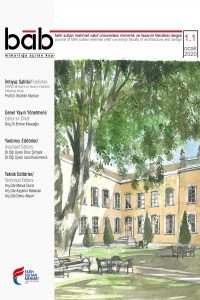
bab Journal of FSMVU Faculty of Architecture and Design
Yazarlar: Adna BERKOVİC, Fatih CANAN
Konular:Mimarlık
Anahtar Kelimeler:Climate responsive design,Vernacular architecture,Ottoman architectural heritage,Comparative analysis,Sustainability
Özet: Vernacular architecture is acknowledged as an architecture created on the basis of a tradition that indicates one geographically or rather culturally differentiated area. It has features of traditional architecture, yet vernacular structures have been built in various architectural styles depending on the location. The significance of climate in formation of vernacular settlements is widely acknowledged. Vernacular settlements were designed to be climate-responsive achieving comfort by passive means. Climate comfort is one of the uttermost crucial components of present-day architectural design. It is not to be expected that vernacular dwellings respond to today’s requirements in terms of comfort, yet their sustainable strategies could be used as a model for modern building design. Vernacular building strategies were developed by appreciating environment, climate, and culture. Regardless of the distance between Počitelj and Safranbolu, resembling vernacular design approaches were noticed under the impact of the same climate conditions and the similar culture considering both settlements were under the rule of the Ottoman Empire at a certain point in time. Therefore, the climatic factor along with cultural factor are relevant to the study as both climate and cultural factor modelled vernacular architecture with common characteristics in both settlements. These resembling vernacular design patterns provide a sufficient level of comfort for its inhabitants in both regions considering that they have been developed to adapt to a specific climate and geographical territory. This paper compares two distant vernacular settlements, Počitelj and Safranbolu, in terms of climate comfort and cultural impact by using qualitative data analysis, comparative synthesis, and field observation methods. The outcomes of the study provide points of similarity between climate responsive vernacular design patterns used in the two settlements located in the same type of climate, as well as understanding how sustainable building strategies can contribute in achieving suitable climate comfort conditions in modern building design.